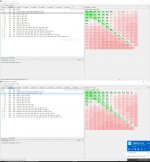A
AviCKter
Visionary
Silver Level
If I am reading the screenshots correctly, you are estimating that this generic villain is open-raising 20% of his hands in this situation from UTG+1. Is this correct?
If so, what led you to that number? I see this from above:
These are NASH equilibrium range, I didn't create it. The software does it for you, it takes into account a lot of different factors while calculating it.
You see, that's where people go wrong, if I shoved KQo, I'm playing loose, that's the assumption, right? But they don't understand what that actual means. What is that tight and loose range?
Most people base it on HUD stats. And you know what, Stats lies. If you play Hyper-turbos you'll see, most people would have a stat of something like 27/19 or something of that sort, so how do you make reads about him? Is he loose, or is he tight?
When someone says a player is tight, that means he's playing tighter than what Nash Equilibrium dictates; if loose, he's playing looser than Nash. That simple.


